Over the last 12 months we crossed the 300-employee mark, opened our 7th office, and added dozens of new clients. We have continued to be incredibly blessed and fortunate. None of this was plotted out years ago at a corporate retreat where we white boarded how we would set up complex strategies to end up here.
Frankly, we wish it was that easy. I wish we knew of a secret formula to just plug in and spit out these results over a long period of time. Instead of a complicated long term strategic plan full of hope and forecasts, we tend to hang our hat on a simple recipe that is not easy to execute. Keeping things simple, doing the next right thing, hiring great people, giving them the freedom and tools to do good work, and building deep long-term relationships – one day at a time.
Where we are in 2023 is the result of one million little decisions compounded over two decades that couldn’t have been written out, forecasted, or guessed. By no means are we claiming victory at this point. We know we’ve got a long way to go, and we’ve got big goals we want to achieve. We’ve made many mistakes getting here and we’ll make plenty more along the way.
Our strategic goal or vision, is to be one of the largest power engineering firms in the southwest United States. Per the Engineering News Record (a resource that ranks engineering and construction firms in various categories) we are ranked #5 in Power Firms in Texas, Louisiana, and Arkansas. Our goal is to be #1 someday. We aren’t going to try and forecast exactly how and when that is going to happen. We are just going to be laser focused on being consistent and disciplined in sticking to our culture and by doing our jobs as well as we possibly can; one day and one decision at a time. If we do that, we’ll get there sooner rather than later and continue to be successful along the way.
A few years ago, we drank a little corporate Kool-Aid and instituted semiannual strategic planning sessions for each of our operating divisions. There were some positive takeaways from the process, but it eventually flamed out. Why? Because as soon as we all walked out of the meeting, things changed. The market changed, things like Covid happened, our assumptions changed, and clients’ needs changed.
That doesn’t mean we don’t plan. “Failing to plan is planning to fail” as the old saying goes. But we do it with common sense and sticking to shorter-term goals and plans, rather than thinking we can forecast to some target that is too far out in the future and completely unknowable. Our planning comes from good communication day to day, week to week, and month to month versus one or two brainstorming sessions a year. You can’t forecast what will come but you can put yourself in the right position to take advantage of opportunities and decisions when they present themselves. You can make your own luck.
Having plans in the short term is critical. Having a complex plan for the long term that is full of forecasts is mostly just pointing you in a direction to go. It’s not something you can rely on like a step-by-step instruction manual and think it’s that easy. None of us have a crystal ball.
When we plan for the future, we plan with the destination we hope to arrive at in mind. However, we know the path to get there is probably going to look different than what we’re imagining today. With the vision in mind, we set goals we want to achieve and have simple steps to achieve them which are held loosely so we can be flexible to make daily decisions to adapt to new circumstances and be opportunistic and adapt to our clients growing and changing needs.
Our process may not be for everyone, but it works for us. To summarize, here’s how we think about achieving our vision and goals through planning and preparing strategically for the future:
- Focus on doing the next right thing.
- Be opportunistic with decision making.
- Stay flexible to change with the market.
- Keep our plans simple.
- Communicate well inside and outside of the organization.
- Focus on the details of your job and don’t make mistakes. Relationships don’t overcome bad work products.
- Incentivize behavior that will help us attain our long-term vision.
- Focus on building long term relationships with clients by taking the time to understand their needs and wants and then providing that. The rest pretty much takes care of itself.
“Success doesn’t come from pie-in-the-sky thinking. It’s the result of consciously doing something each day that will add to your overall excellence.” – Nick Saban, Alabama Head Football Coach.

